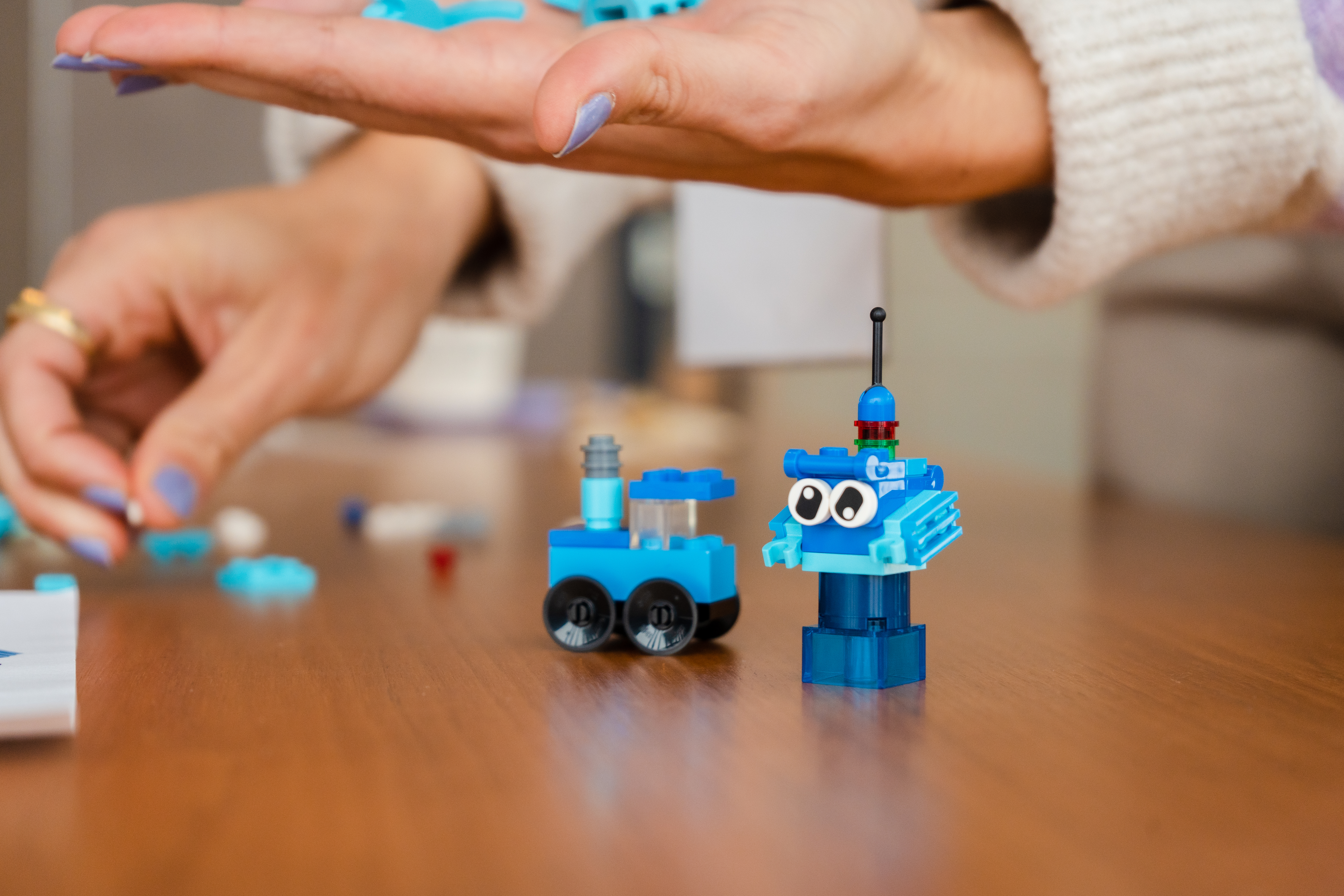“In order to make a system change, you need that system to feel its consequences.”
Participating executives of the Circular Leadership Program entered the Ivey building on a snow-squalling Friday, from up to five hours away from London, with a fiery passion for learning and improving both their businesses and themselves.
Executives in sectors including agriculture, food and beverage, healthcare, professional services, and manufacturing were excited to learn from each other and from Ivey’s scholars in their first workshop.
Some already had fully circular business plans and were aware of the Sustainable Development Goals they were working to address, while others came eager and ready to learn the basics of circularity.
Learning with Lego
The program began with an interactive activity involving Lego sets. Ivey scholars instructed teams to complete their Lego structures and compete on time and beauty in separate groups, but participants quickly realized that collaboration was the only way to solve the puzzle. One participant unlocked the key early on by saying, “I don’t need these pieces, do you?” to another group. Initiating this collaboration allowed all groups to succeed and complete the task.
Upon reflection, participating executives realized that sustainability work must be collaborative and involve information sharing rather than being self-centered. Had each team acted with self-interest, nobody would have won the challenge. Participants realized that cognitive myopia (i.e., the inability to assess systems effects that are distant in time or space) and bounded rationality (i.e., having incomplete information on the broader economic, social, and ecological systems in which each organization is embedded) are two key impediments to the circular economy.

Using academic tools in practice
After a lunch break, participants reconvened to learn more about circularity and systems thinking from Professor Jury Gualandris and postdoctoral associate Ju Young Lee. Gualandris provided participants with information on the waste that various industries produce and what tiers of the supply chain it emerges from. He also informed the group of the percentage of circularity present in these industries. The agri-food sector was the highlight of the discussion, as that is where most of the participating companies lie.
Lee had participants offer examples of systems impacting them, which are nested everywhere in society. They came up with many such as the financial system, transportation system, and regulatory system, and noted that some are very hard to change especially because of the mindset or paradigm out of which the system arises (e.g., shareholder primacy in financial systems). Some executives shared that they feel the Canadian system holds back their sustainable businesses, compared to what might be possible in a European system, for example.
Everyone learned about Innovation North’s Compass, a tool that teaches business leaders to “zoom in and out and look left and right” when coming up with new ideas. The tool will be used for the duration of the program and help each company reach its ‘North Star.’
Participants are eager to return to Ivey next month after completing between-session activities with their business teams.
About the Program
Hosting the program is the Centre for Building Sustainable Value, Innovation North, and the Circular Opportunity Innovation Launchpad.
Through four day-long workshops, participants will develop circular ideas to implement into their company that are technically feasible, economically viable, and ecologically impactful. Executives will develop these ideas through innovative tools and experiences grounded in systems thinking. At the end of the workshops, participants have the opportunity to pitch their circular ideas for funding.
Learn more about the Circular Leadership Program: https://coil.eco/clp/
Program Make-up
The following charts represent the types of businesses that comprise the Circular Leadership Program.





